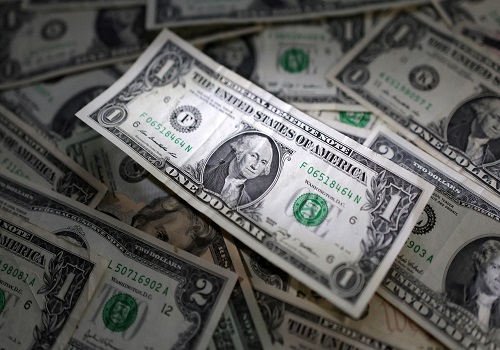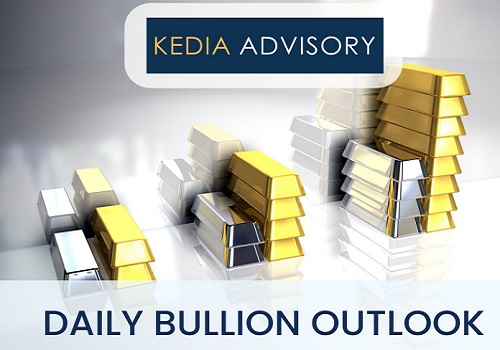Turmeric trading range for the day is 13406-14582 - Kedia Advisory

Gold
Gold prices edged up by 0.34%, settling at 97,357, supported by renewed expectations of U.S. Federal Reserve rate cuts amid weaker macroeconomic data. A drop in U.S. consumer confidence for June raised concerns over the potential drag from tariffs and labor market uncertainties, prompting markets to price in possible monetary easing later this year. While Fed Chair Jerome Powell maintained a cautious stance, reiterating there is "no rush" to cut rates, he acknowledged that economic conditions could warrant easing if they deteriorate further. On the geopolitical front, the fragile ceasefire between Israel and Iran remained intact, limiting gold’s safe-haven appeal. However, central bank demand continues to support the market, with the People’s Bank of China adding 60,000 ounces to its reserves in May, marking the seventh consecutive month of net gold purchases and bringing its total holdings to 73.83 million ounces. In the physical market, Indian dealers narrowed discounts to $27/oz, down from $63, as slightly lower domestic prices helped revive demand. In contrast, premiums in China fell to $10/oz, reflecting subdued buying activity. Globally, Q1 2025 gold demand rose by 1% YoY to 1,206 metric tons, with investment demand surging 170%, offsetting declines in coin (-32%) and jewelry (-21%) segments. Central bank purchases also dipped 21% YoY. Technically, gold is under fresh buying as open interest increased 0.8% to 13,529 lots. Immediate support is at 97,070, with further downside toward 96,790. Resistance lies at 97,575, with potential upside to 97,800 if breached.
Trading Ideas:
* Gold trading range for the day is 96790-97800.
* Gold gains as weak US data boosted hopes for Federal Reserve rate cuts.
* However, a fragile ceasefire between Israel and Iran appeared to be holding, reducing safe-haven demand.
* PBOC added 60,000 ounces to its gold reserves in May, marking its seventh consecutive month
Silver
Silver prices rose by 1.01% to settle at 105,980, supported by a weaker US dollar and declining Treasury yields, following dovish signals from the Federal Reserve. Fed Chair Jerome Powell emphasized policy flexibility, suggesting the central bank could act swiftly with rate cuts if labor market weakness emerges. This raised investor expectations for a possible rate cut in July, boosting precious metal sentiment. Geopolitically, the US-brokered ceasefire between Israel and Iran continued to hold despite minor flare-ups. However, reports that recent US missile strikes only partially damaged Iran’s nuclear facilities kept underlying tensions alive, maintaining some safe-haven demand for silver. From a fundamental perspective, silver prices remained underpinned by strong industrial demand and supply constraints. The US current account deficit widened sharply by 44.3% to $450.2 billion in Q1 2025, signaling economic imbalances that may prompt policy easing—another supportive factor for bullion. The silver market is projected to post a deficit for the fifth consecutive year, with global demand expected to remain stable at 1.20 billion ounces. Industrial fabrication is forecast to grow 3% to over 700 million ounces, driven by demand from green energy applications. Silver coin and bar investment is also forecast to rise 7%, reversing a 22% decline in 2024. Technically, silver is under short covering, with open interest down by 11.07% to 9,126 lots. Support lies at 105,120, with further downside at 104,255, while resistance is at 106,480, and a breakout may push prices toward 106,975.
Trading Ideas:
* Silver trading range for the day is 104255-106975.
* Silver gains supported by a weaker US dollar and falling Treasury yields.
* Silver also remained supported by strong industrial demand and ongoing supply constraints.
* Federal Reserve Chair Jerome Powell signaled flexibility on monetary policy, stating that “many paths are possible”.
Crude oil
Crude oil prices edged higher by 1.07%, settling at 5,643, supported by signs of strong U.S. demand and tightening inventories. The U.S. Energy Information Administration (EIA) reported a 5.836 million barrel drawdown in crude inventories for the week ended June 20, significantly above market expectations of a 0.75 million barrel decline. Additionally, gasoline and distillate stocks fell by 2.075 million and 4.066 million barrels, respectively, signaling robust demand in the world’s largest oil consumer. Geopolitical developments continued to provide underlying support, with a U.S.-brokered ceasefire between Iran and Israel appearing to hold. President Trump’s unexpected move to support China’s continued import of Iranian crude suggests a potential easing of sanctions, injecting both optimism and uncertainty into the global supply outlook. On the macroeconomic front, weak U.S. data and declining consumer confidence bolstered hopes of a Federal Reserve rate cut, further supporting crude prices by weakening the dollar and improving investor sentiment toward risk assets. Meanwhile, the International Energy Agency (IEA) reaffirmed that global oil demand is expected to peak at 105.6 million bpd by 2029, though OPEC maintains a more bullish long-term view. Technically, the market is under short covering, with open interest falling by 9.88% to 12,037. Support is seen at 5,578, with further downside at 5,512, while resistance is placed at 5,703, and a breakout could push prices toward 5,762.
Trading Ideas:
* Crudeoil trading range for the day is 5512-5762.
* Crude oil rose as support came from data that showed U.S. demand was relatively strong.
* Crude oil inventories in the US fell by 5.836 million barrels in the week ended June 20, 2025.
* Gasoline stocks decreased by 2.075 million barrels and stocks of distillate fuels fell by 4.066 million barrels.
Natural gas
Natural gas prices declined by 1.49%, settling at 311.3, pressured by rising production levels and sustained strong storage injections across the U.S. The average output in the Lower 48 states increased marginally to 105.5 bcfd in June, up from May, though still below March's record due to earlier maintenance-related downtime. The latest EIA report showed U.S. utilities injected 95 billion cubic feet (bcf) into storage for the week ending June 13, closely matching expectations. Total gas stocks reached 2.802 trillion cubic feet, 6.1% above the five-year average but 7.7% lower year-on-year, reinforcing the perception of ample supply. Adding to bearish sentiment, U.S. LNG exports dropped to 14.1 bcfd in June from 15.0 bcfd in May and below April’s peak of 16.0 bcfd, reflecting seasonal maintenance and softer international demand. The ongoing ceasefire between Israel and Iran has also eased geopolitical tensions, reducing the premium previously built into energy prices due to Middle East risks. Looking ahead, the EIA forecasts both natural gas production and demand to hit new records in 2025, with output projected at 105.9 bcfd and consumption at 91.3 bcfd, maintaining a bullish long-term backdrop despite near-term headwinds. Technically, the market is under fresh selling pressure, as evidenced by a 33.45% surge in open interest to 15,805, suggesting aggressive new short positions. Support is seen at 308.3, with further downside at 305.2, while resistance stands at 316.7, and a break above that could lead to a test of 322.
Trading Ideas:
* Naturalgas trading range for the day is 305.2-322.
* Natural gas fell pressured by rising output and strong storage injections.
* Lower 48 production averages 105.5 bcfd in June, slightly above May but below March peak.
* Hot weather fails to curb above-average gas injections; stocks remain 6% above 5-year norm.
Copper
Copper prices rose by 0.5% to settle at 885.75, supported by a sharp drop in global inventories and sustained speculative buying. London Metal Exchange (LME) copper stockpiles have declined over 63% year-to-date, falling to just 99,000 metric tons, driven largely by front-loaded shipments to the U.S. in anticipation of potential tariffs under former President Trump’s trade policies. Despite this, analysts warn that U.S. demand may soften in the near term once tariff clarity emerges, especially as many buyers have already preemptively built inventories. Premiums for nearby copper contracts, which had recently spiked due to supply tightness, have started to retreat. The cash-to-three-month premium on LME dropped from $280/ton on Monday to $94/ton by Wednesday, signaling easing immediate demand pressures. Fundamentals in the refined copper market shifted as well. According to the International Copper Study Group (ICSG), April showed a deficit of 50,000 metric tons, reversing from a surplus in March. On a year-to-date basis, the market remained in a surplus of 233,000 metric tons, slightly below last year's levels. Meanwhile, China’s imports of copper and copper products dropped 2.5% MoM in May, indicating some softness in the world's top consumer. Technically, the market is witnessing fresh buying interest, as reflected by a 2.54% rise in open interest to 6,777. Copper is finding immediate support at 882.9, with deeper support at 880.1. On the upside, resistance is pegged at 887.7, and a breakout could lead to a test of 889.7.
Trading Ideas:
* Copper trading range for the day is 880.1-889.7.
* Copper gained supported by a sharp decline in global inventories.
* London Metal Exchange copper stockpiles have dropped over 63% year-to-date, falling to just 99,000 metric tons.
* Cash-to-3-month copper premium drops to $94/ton from $280—highest since Nov 2021.
Zinc
Zinc prices edged higher by 0.85%, settling at 256.3, supported by positive market sentiment from a tentative ceasefire between Israel and Iran and a weaker US dollar, which lifted base metal markets. A firmer Chinese yuan and dovish comments from US Fed officials further underpinned the bullish bias, although uncertainty over the long-term stability of the Middle East truce capped gains. Supply-side concerns provided additional support. Production disruptions at smelters in South China due to heavy rainfall, along with a 5.7% weekly drop in zinc inventories in warehouses monitored by the Shanghai Futures Exchange, pointed to tighter near-term availability. On the global scale, refined zinc production in China dipped by 1% month-on-month in May, reflecting the impact of scheduled and unplanned maintenance across major smelting regions like Henan, Guangxi, and Qinghai. Despite these supportive factors, demand-side headwinds persist. Weak manufacturing activity in China continues to limit zinc’s upside, with buyers opting for hand-to-mouth procurement due to sluggish industrial recovery. That said, improving retail sales in China have raised hopes of a broader demand revival in the second half of 2025. Meanwhile, global zinc market dynamics remain relatively balanced, with the global surplus narrowing to 16,000 tons in April, down from 23,400 tons in March. Technically, the zinc market witnessed fresh buying, as indicated by a 23.02% jump in open interest to 3,527. Zinc has immediate support at 255, with further downside likely at 253.6. On the upside, resistance is seen at 257.3, and a breakout may lead to testing of 258.2.
Trading Ideas:
* Zinc trading range for the day is 253.6-258.2.
* Zinc gains supported by a tentative ceasefire between Iran and Israel, improved the market sentiment.
* The global zinc market surplus fell to 16,000 metric tons in April from 23,400 tons in March – ILZSG
* Production at some smelters in South China was affected by heavy rain.
Aluminium
Aluminium prices edged slightly lower by 0.18%, settling at 247.15, as geopolitical tensions eased following the ceasefire between Iran and Israel, removing immediate risks to the Strait of Hormuz — a crucial shipping lane for Middle East aluminium producers. However, the downside was capped by a softer U.S. dollar and improved risk sentiment, supporting demand recovery expectations. Market fundamentals continue to reflect a mixed outlook. Japanese aluminium buyers agreed to a $108/ton premium for Q3 shipments, marking a 41% drop from the previous quarter and the lowest since Q1 2024, amid weak demand and surplus availability. Similarly, U.S. physical premiums declined over 7% on speculation around reduced import tariffs from Canada — the top aluminium supplier to the U.S., having shipped 3.2 million tons last year. On the supply front, global primary aluminium production rose 1.5% YoY to 6.245 million tonnes in May, as per IAI. Chinese output also climbed 5.0% YoY to 3.83 million tonnes, with cumulative production for Jan–May up 4.0%, indicating robust supply momentum. However, uncertainty looms over bauxite supply due to tensions in Guinea, threatening long-term raw material security. Exports from China reached 547,000 tonnes in May, rising 5.6% MoM but falling 3.2% YoY, contributing to a year-to-date decline of 5.1%. Technically, the market saw fresh selling, confirmed by an 8.31% rise in open interest to 3,977. Aluminium is getting support at 246.3, with further downside likely to test 245.3. Resistance is seen at 248.4, with a move above that possibly taking prices to 249.5.
Trading Ideas:
* Aluminium trading range for the day is 245.3-249.5.
* Aluminium falls as Iran-Israel ceasefire eases Hormuz shipping concerns for Middle East aluminium producers.
* However, downside seen limited amid softer dollar and improved risk sentiment.
* Japan aluminium premium set at $108/T for Q3, down 41% on weak demand.
Turmeric
Turmeric prices declined sharply by 3.47%, settling at 13,834 per quintal, amid weak domestic and export demand. The drop was influenced by a slight uptick in arrivals, which rose to 13,660 quintals compared to 11,940 quintals in the previous session, signaling increased market availability. Despite this, price downside could remain limited going forward due to production concerns and quality issues. For the 2024–25 season, turmeric acreage has reportedly increased by 10%, reaching 3.30 lakh hectares from 3 lakh hectares last year, as lower returns from other crops make turmeric relatively more attractive. However, untimely rainfall in key growing regions, especially Nanded, has adversely impacted crop health and yield potential, with expected productivity declines of 10–15%. Quality issues such as smaller rhizomes and crop rot further cast doubt on a proportional rise in output. Interestingly, despite the seasonal end, market activity remains strong. At the Duggirala market, fresh arrivals continue to fetch premiums over older stock, driven by superior quality and steady buyer interest. Roughly 50–55% of the new crop has already been traded, suggesting strong absorption. In terms of exports, April 2025 shipments stood at 14,956.80 tonnes, up 6% YoY but marginally lower than March 2025 by 0.92%. Technically, the market is under fresh selling pressure as open interest rose by 0.51% to 17,615 lots, while prices dropped by 498. Immediate support lies at 13,620, with further downside possible to 13,406, while resistance is seen at 14,208, and a breakout could push prices toward 14,582.
Trading Ideas:
* Turmeric trading range for the day is 13406-14582.
* Turmeric prices dropped due to weak domestic and export demand.
* Arrivals rose to 13,660 quintals vs. 11,940 in the previous session, indicating increased availability
* Turmeric exports during Apr - Mar 2025, jump by 8.83 percent at 176325.34 tonnes compared to Apr - Mar 2024.
* In Nizamabad, a major spot market, the price ended at 14415.15 Rupees gained by 0.05 percent.
Jeera
Jeera prices rebounded by 1.9% to settle at 19,610 per quintal, driven by short covering after recent declines caused by weak post-retail season demand. Traders reported subdued momentum in both domestic and export markets as the retail season concluded and foreign buyers remained largely inactive. Despite a temporary bounce, market sentiment remains cautious due to ample supplies and sluggish export activity. Fundamentally, stocks remain comfortable, with farmers still holding around 20 lakh bags, out of which only 3–4 lakh bags are expected to be traded before season-end. This implies a carry-forward stock of nearly 16 lakh bags, adding downward pressure on prices. Production estimates for the current season are in line with last year, supported by favorable sowing and healthy crop conditions. However, despite geopolitical tensions in other jeera-producing nations like Syria, Turkey, and Afghanistan, Indian jeera exports have yet to gain strong traction. April 2025 export data shows 19,719.60 tonnes of jeera were shipped, down a sharp 48.11% YoY but up 13.74% MoM from March 2025. On the import front, jeera imports dropped by 37.9% YoY and 40% MoM, indicating reduced foreign inflow. Technically, jeera is under short covering, with open interest falling 7.23% to 5,967 lots while prices rose 365. Immediate support lies at 19,320, and a break below could lead to 19,020. On the upside, resistance is at 19,850, and a move beyond that could see a test of 20,080.
Trading Ideas:
* Jeera trading range for the day is 19020-20080.
* Jeera gained on short covering after prices dropped due to weak domestic and export demand.
* Ample existing stock and comfortable supply are dampening price prospects.
* Global supply disruptions haven't translated into higher Indian exports due to tepid demand.
* In Unjha, a major spot market, the price ended at 19838.1 Rupees gained by 0.53 percent.
Views express by all participants are for information & academic purpose only. Kindly read disclaimer before referring below views
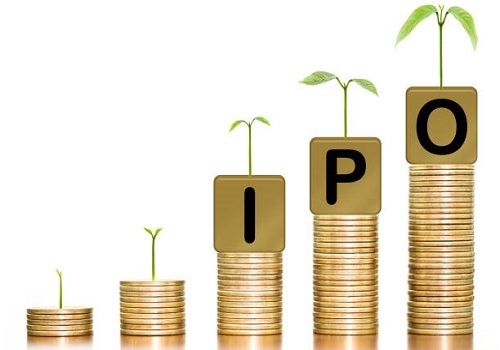
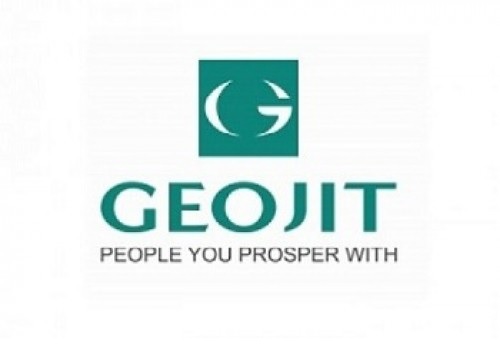
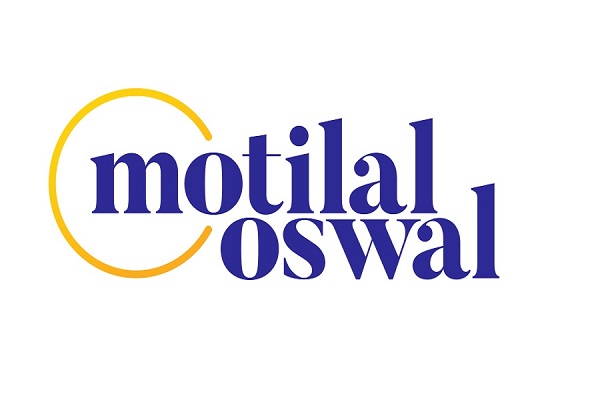

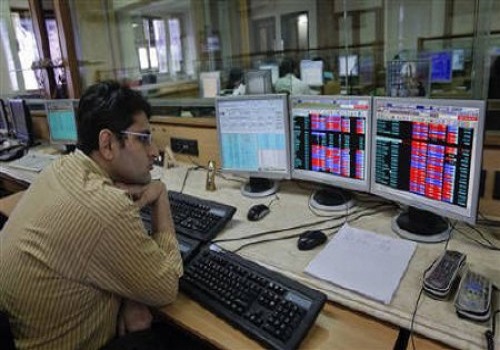
.jpg)


